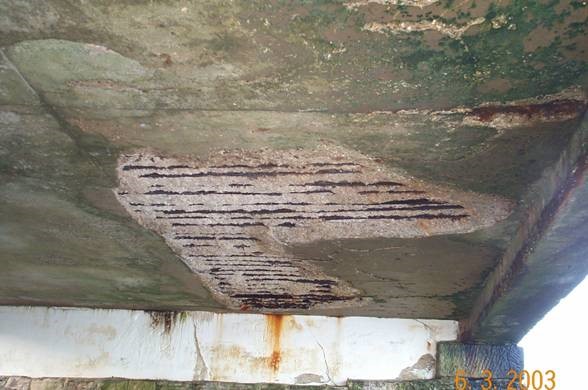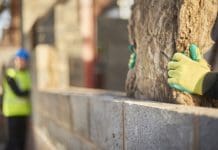It is often assumed that all reinforced concrete is extremely durable – but, depending on location and conditions, this is not always the case. In the third of a series of articles, James McDonald of Cementaid examines the factors behind concrete corrosion and how it can be avoided
The January article discussed the problem of a lack of a definition for ‘waterproof concrete’ and the difficulty specifiers have in ensuring appropriate products are used as specified.
The April article considered how to properly specify admixtures and this piece considers some of the causes of premature concrete deterioration as a result of water ingress.
There is a general misconception that all reinforced concrete is highly durable and will last a very long time. This might be true of concrete in a completely inert environment but for concrete placed, for example, below the ground, in regular contact with seawater or exposed to freeze-thaw conditions, durability is a problem and the causes of this are numerous, including:
- Chloride-induced corrosion of steel reinforcement.
- Sulphate attack on cement paste.
- Acid attack on cement paste and steel reinforcement (eg carbonation).
- Delayed ettringite formation.
- Alkali attack on reactive aggregates (ASR).
- Pure water attack on cement paste (snow melt, moorland water etc).
- Galvanic/electrolytic attack on steel reinforcement.
- Freeze/thaw attack on cement matrix.
- Surface spalling due to salt crystallisation.
- Very high temperature/fire destruction of cement matrix.
- Expansion/contraction cycling caused by wetting/drying.
To explain how all these damage concrete would fill a book, so no attempt is made here to try and do this. Suffice to say that many ideas have been tried to overcome these problems but, as with medical drugs, some of these have resulted in unintended consequences, some have only worked for a short period of time and some simply didn’t really work at all.
For example:
- Barrier-type coatings and surface repellents that are easily damaged, can be degraded in UV light and usually need regular replacement.
- Epoxy coated re-bar, which on a site is easily damaged and wasn’t the great cure it was hoped it would be.
- Galvanised steel, stainless steel or other alloyed re-bar, which merely delay the onset of corrosion but still corrode.
- Cathodic protection, which requires constant monitoring and maintenance, and, although theoretically a good idea, there have been a number of less than satisfactory incidences.
- Chemical cathodic protection and calcium nitrites, which degrade over time.
- Low C3A, sulphate-resisting cement.
- High alumina cement, need mention be made of collapsed buildings in the 1970s?
- High strength or high cement contents, which greatly increase capillary suction resulting in a speed up of water passage through the concrete, as noted in the January article, and engineering considerations as to the likely increase in the reinforcement required.
- Exotic mixes of blended Portland cement, low-heat and supplementary cementitious materials (SCMs) – materials that, when used with Portland cement, contribute to the properties of the hardened concrete through hydraulic or pozzolanic activity, or both. The most commonly used SCMs are fly ash, ground granulated blast-furnace slag (GGBS) and silica fume.
- Expensive, ultra-low reactivity aggregates.
- Very high cover to reinforcing steel which increases the risk of cracking and thus is likely to worsen the problem it was meant to solve.

When considering the 11 common forms of concrete deterioration, all of these require just one item as the catalyst in every case.
Water is:
- A solvent.
- An electrolyte.
- A chemical reactant.
- A medium in which chemical and electrolytic reactions take place.
- A physical agent of volume change.
- A carrier of reactive and reacted materials.
If water can be prevented from entering concrete, so that in effect you have dry concrete, none of the 11 forms of corrosion noted will be activated.
The photos above demonstrate the effectiveness o the use of genuine waterproof admixtures to resist corrosion. These are pipeline support chairs crossing a tidal creek where summer temperatures reach 40°C (There is a rule of thumb that the rate of corrosion doubles for every 10°C increase in temperature).
The concentration of chemicals in the water in mg/litre are as follows:
Sodium/potassium 29,200mg/l, sulphate 7,200mg/l and chloride 53,000mg/l that far exceed the worst possible cases indicated by BRE Special Digest 1 – DS4 & DC4.
From the designer’s perspective, much of what is necessary to achieve the required quality of in-place concrete is outside of his or her control, eg cement, sand and aggregates used and the placement, compaction, curing and care of the concrete. However, just as with cooking, to get a quality product you have to start with quality ingredients and if a waterproofing admixture is to be used, the most important criteria for selection is proven long-term performance.
Accelerated testing may give an indication of how a product will perform over, say, 20 or 30 years, but in the UK climate, ordinary concrete can be expected to perform well over this period of time when subjected to sulfate or chloride attack before significant maintenance is required. Given that the design life is likely to be 60, 100 or even 120 years for a structure, a proven life of a mere 30 years is hardly adequate.
This explains why the Concrete Society report into the use of waterproofing admixtures to provide corrosion protection concluded that apart from one admixture, no proper supporting evidence was provided to substantiate their use.
James McDonald
General Manager
Cementaid
Tel: +44 (0)1293 653 900














